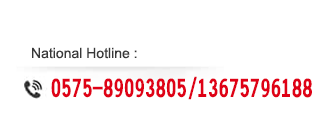 Your current position: Home >> Differences between CEM-3 and FR-4
Differences between CEM-3 and FR-4
Published by:2022/6/24 Categories:Company news Viewed by: 1683 times
Double sided and multilayer printed circuit boards for electronic products usually use FR-4 base material, which is a copper-clad flame-retardant epoxy glass cloth. CEM-3 is a new substrate material for printed circuit based on FR-4. In recent years, CEM-3 has been widely used in Japan to replace FR-4, even exceeding the amount of FR-4. About 55% of double-sided boards use CEM-3. 1、 CEM-3 is a composite copper clad laminate
FR-4 is made of copper foil and glass fiber cloth impregnated with flame retardant epoxy resin. The difference between CEM-3 and FR-4 is that the composite substrate of glass cloth and glass felt, also known as composite substrate, is used instead of pure glass cloth.
The production process of CEM-3 is similar to that of FR-4. The glass felt can be glued vertically or horizontally. The epoxy resin system used is the same as that of FR-4. In order to improve the performance, it can be modified by adding a certain amount of filler. The pressing pressure is generally half lower than that of FR-4. In order to meet the requirements of different thickness, glass felt with different standard weight can be used, commonly used are 50g, 75g and 105g.
2、 CEM-3 performance
If CEM-3 wants to replace FR-4, it must meet the various performances of FR-4. At present, CEM-3 has overcome the defects of early CEM-3 products such as poor punching metallization quality, warpage and dimensional stability by improving the resin system, glass felt and lamination manufacturing process. The glass transition temperature, immersion welding resistance, peel strength, water absorption, electrical breakdown, insulation resistance, UL index, etc. of CEM-3 can all meet the FR-4 standard. The difference is that the bending strength of CEM-3 is low
At FR-4, the thermal expansion is greater than FR-4.
CEM-3 metallized hole processing is not a problem. The drilling bit has low wear rate, is easy to punch and press forming, and has high thickness and dimensional accuracy, but its metallized appearance of punching is slightly poor. 3、 CEM-3 market application
UL believes that CEM-3 and FR-4 can be interchanged, so the double-sided board of FR-4 can generally be used as a replacement object. Since the performance of CEM-3 is similar to that of FR-4, it is possible to replace CEM-3 on multilayer boards.
As the price competition of printed circuit board is very fierce, the four layer board market has also begun to consider the selection of CEM-3. But for thin plate (<0.8mm), the price advantage does not exist.
The printed circuit board made of CEM-3 has been used in fax machines, copiers, instruments, telephones, automotive electronics, household appliances and other products. 
|


